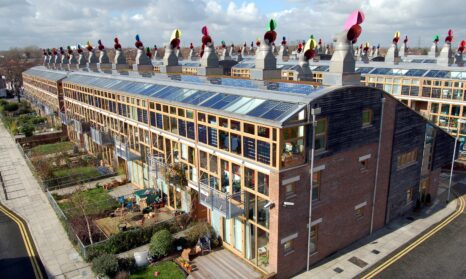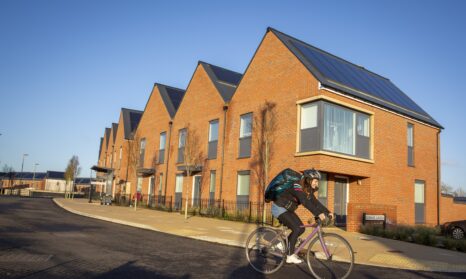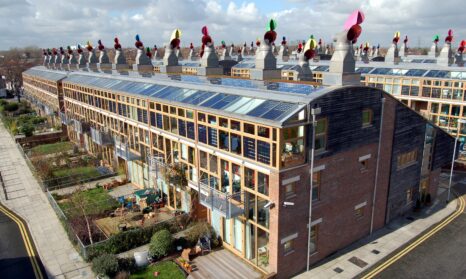Sky News report on UK Heatwave: energy-efficient buildings are vital
Yesterday afternoon Sky News called us to say they were running a story on the back of the Environmental Audit Committee’s call for the Government to make sure that our infrastructure is fit for a future of regular heatwaves. They wanted to talk to someone who could point to examples of how to make our homes and neighbourhoods able to deal with more unbearably hot days like the ones we’ve had this week.
I agreed to do the interview on the condition that I could mention the ‘C’ word: climate change.
It’s frightening that according to the EAC report Heatwaves: adapting to climate change, heat-related deaths in the UK will treble by 2050 unless the Government develops a cohesive strategy to tackle the effects of climate change in the UK. And bravo to Mary Creagh MP who backed the report, saying in Parliament that:
“Heatwaves cause premature deaths from cardiac, kidney and respiratory disease. There will be 7,000 heat-related deaths every year in the UK by 2050 if the Government does not take action.”
There are three things to consider to keep everyone, but especially the elderly, ill and other vulnerable people, more comfortable in hot weather:
How buildings are built. We need to design buildings like thermos flasks – keeping the heat out in the summer, and keeping it in during the winter. Shading and good ventilation are key too – windows that open on more than one side of a building, so you can get a good draught. In the UK, the London Plan guidance is really good on the detail of this. Better than the UK building regulations which are vague.
How we plan our towns and cities. Reducing concrete and hard surfaces, increasing green areas and creating tree canopies all help reduce the urban heat island effect. And this is not just because of the welcome shading that trees provide. Trees regulate their temperature by sweating, giving off moisture, which makes the surrounding area cooler too.
How we use our buildings. There has been a lot of advice about this on the news recently – things like only having north-facing windows open during the day, opening all the windows in the evening, shutting the curtains during the day, to keep the heat out. Ideally, the curtains or blinds should be light ones. Otherwise your blinds will just suck in the heat and then you’ve got a 50-60C radiator the size of your window in your room.
…the second part of the story is keeping fossil fuels in the ground
But, as I told Sky News reporter Lisa Holland yesterday, as well as doing much more to cool new and existing homes and communities, very simply, we must simply burn less fossil fuels, to stop more carbon dioxide entering the atmosphere.
And of course a key part of that is making sure our buildings use as little energy as possible to help us avoid runaway climate change.
The Government’s recent clarification to the UK Green Building Council that local authorities can set higher standards on carbon reductions for new homes than national regulations is welcome. But it needs to do much more to show leadership on this.
Our experience with BedZED, One Brighton and working with others on zero-carbon developments demonstrates it can be done. So let’s get on with it. The consequence of not addressing this, as I said to Lisa yesterday, is runaway climate change. This would be a catastrophe.








